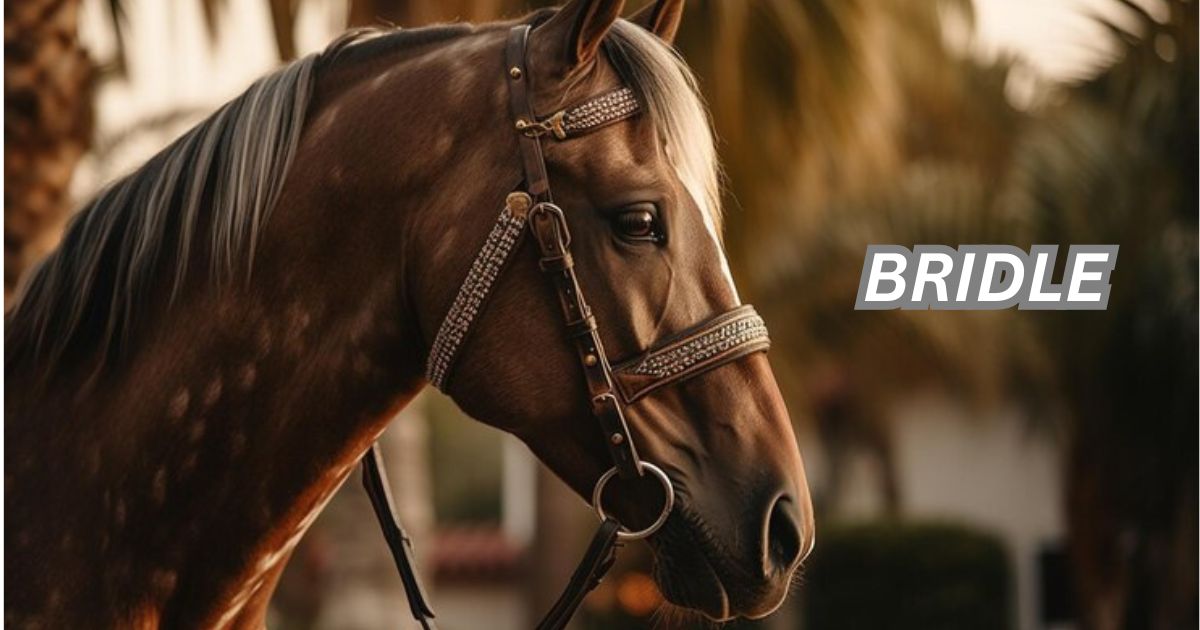A bridle is a crucial piece of tack used in horse riding, providing control and communication between the rider and the horse. Whether you’re a beginner or an experienced equestrian, understanding the components, types, and importance of a bridle can significantly enhance your riding experience. In this article, we’ll explore everything you need to know about bridles, from their history to maintenance tips.
What Is a Bridle?
A bridle is a headgear used to direct and control a horse. It consists of multiple components, including the headstall, bit, and reins, working together to ensure proper communication between the rider and the horse. Bridles come in various types, each suited for different riding disciplines and horse breeds.
History of the Bridle
The use of bridles dates back thousands of years, with early designs appearing in ancient civilizations such as Mesopotamia and Egypt. Early bridles were made from rawhide and plant materials, gradually evolving with the introduction of metal bits and leather craftsmanship. Over time, the design of bridles has been refined to offer better comfort and efficiency in horse riding.
Components of a Bridle
A bridle consists of several essential parts that work together to facilitate communication and control:
Headstall: The main framework that holds the bridle together, fitting around the horse’s head.
Bit: A metal or synthetic piece placed in the horse’s mouth, helping the rider send signals through rein pressure.
Reins: Straps connected to the bit, held by the rider to guide the horse’s movements.
Browband: A horizontal strap that runs across the horse’s forehead, preventing the bridle from slipping backward.
Throatlatch: A strap running under the horse’s throat, securing the bridle in place.
Noseband: A strap encircling the horse’s muzzle, offering additional control.
Types of Bridles
Different types of bridles serve specific riding purposes. Choosing the right one depends on the discipline, horse behavior, and rider preference.
Snaffle Bridle
A snaffle bridle is one of the most common types, featuring a simple design with a snaffle bit. It is ideal for beginners and dressage riders due to its gentle nature and straightforward control mechanism.
Double Bridle
Also known as a full bridle, a double bridle features two bits—a snaffle and a curb—offering more precise control. It is commonly used in advanced dressage and high-level equestrian sports where refined communication is essential.
Western Bridle
Western bridles, often used in rodeo and trail riding, typically lack a noseband and may have decorative elements such as silver conchos or intricate leather tooling. Some western bridles come without a bit, relying on a bosal or hackamore for control.
Bitless Bridle
Bitless bridles operate without a metal bit in the horse’s mouth, using pressure points on the nose and head to guide the horse. They are preferred by riders who want a gentler approach to horse control, particularly for horses with sensitive mouths.
Hackamore Bridle
A hackamore is a type of bitless bridle that relies on nose pressure rather than mouth control. It is often used for training young horses or for horses that do not respond well to bits.
Importance of Using the Right Bridle
Choosing the right bridle is essential for both the rider’s control and the horse’s comfort. An ill-fitting or inappropriate bridle can cause discomfort, resistance, and even injury. Proper selection ensures clear communication between rider and horse, improving performance and safety.
How to Fit a Bridle Properly
A well-fitted bridle ensures comfort and effectiveness. Here’s how to check the fit:
Headstall Adjustment: It should sit snugly but not tightly, allowing room for movement without slipping.
Bit Placement: The bit should rest comfortably in the horse’s mouth with minimal wrinkles at the corners.
Noseband Position: It should be tight enough to prevent the horse from evading the bit but not so tight that it restricts breathing.
Throatlatch Fit: Ensure you can slide two fingers between the strap and the horse’s throat for comfort.
Common Bridle Materials
Bridles come in various materials, each with distinct advantages:
Leather: The most traditional and durable option, providing a classic look and flexibility.
Synthetic: Lightweight and easy to clean, ideal for riders seeking low maintenance.
Rope: Often used in bitless bridles, offering a softer, natural feel.
How to Maintain a Bridle
Proper maintenance extends the lifespan of a bridle and ensures the horse’s comfort.
Cleaning: Wipe down the bridle after each use to remove sweat and dirt.
Conditioning: Apply leather conditioner regularly to keep the leather soft and prevent cracking.
Storage: Keep bridles in a dry, cool place away from direct sunlight to prevent deterioration.
Inspection: Check for any signs of wear, such as frayed stitching or rusted buckles, and replace parts as needed.
Signs That Your Bridle Needs Replacement
Over time, bridles wear out and require replacement. Some indicators include:
Cracked leather that feels brittle.
Loose stitching that compromises the structure.
Rusting metal parts that weaken durability.
Persistent discomfort in the horse, indicating poor fit or damage.
Training a Horse to Accept a Brid’le
Some horses may resist wearing a bridle, requiring patient training.
Gradual Introduction: Let the horse sniff and explore the bridle before attempting to put it on.
Gentle Handling: Use slow, smooth movements to avoid startling the horse.
Positive Reinforcement: Reward cooperation with treats or gentle praise.
Consistency: Regular practice helps the horse associate the bridle with riding.
Brid’le Accessories for Better Performance
Certain accessories can improve the functionality of a bridle.
Martingales: Help prevent excessive head tossing.
Blinkers: Used in racing to limit peripheral vision and maintain focus.
Bit Guards: Prevent chafing from the bit.
Rein Stoppers: Keep the reins from slipping too far through the rider’s hands.
Common Brid’le Mistakes to Avoid
Avoiding these mistakes can enhance horse comfort and rider control:
Using the wrong bridle type for the horse’s training level.
Incorrectly fitted bridle causing discomfort.
Neglecting bridle maintenance, leading to wear and tear.
Overusing harsh bits, causing pain or fear in the horse.
Conclusion
A bridl’e is more than just a riding accessory—it’s an essential tool for effective horse communication and control. Choosing the right type, ensuring a proper fit, and maintaining it well can make a world of difference in your riding experience. Whether you prefer a traditional leather bridle or a modern synthetic design, prioritizing comfort and function will benefit both you and your horse.
FAQs
How do I choose the right bri’dle for my horse?
Consider your riding discipline, the horse’s comfort, and whether a bitless or traditional bridle suits your needs best.
How often should I clean my bridle?
Ideally, clean your bridle after every ride, with deep conditioning done once a week for leather bridles.
Can a brid’le cause discomfort to a horse?
Yes, an ill-fitting or poorly maintained bridle can cause pain, irritation, or behavioral issues in horses.
What is the difference between a bitless brid’le and a traditional bridle?
A bitless bridle controls the horse using pressure points on the nose and head, while a traditional bridle uses a bit in the mouth.
Is it necessary to use a noseband on a bridle?
Not always. Some bridles, like western styles, don’t require a noseband, while others use it for additional control.











